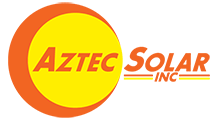As solar energy depends on the sun’s rays, nighttime and cloudy conditions can result in insufficient electricity if there is not a method to store the energy. Utility companies and researchers are working hard to be able to integrate renewable energy sources into the grid. So, how exactly is solar energy (called photovoltaic energy) stored for later use?
The most traditional form of storage is a battery, which is being used mostly for short periods to keep the grid stable and not necessarily incorporating the renewable energy into the grid. Only 60 megawatts of storage were in use last year in the U.S.
One type of battery is called a flow battery and has been used since the 1980s; vanadium ions are in the battery tanks and can deliver more hours of energy simply by having a larger amount of ions. Flow batteries are a good option because they have the ability to provide sustained energy over time. These batteries have a much longer life than other batteries (lithium-ion for example) and can be completely discharged, unlike other battery types. Unfortunately vanadium is not cheap, and so it isn’t the most cost effective option for storing large amounts of energy.
Researchers have been investigating a new flow battery option, which uses a much cheaper option – quinones. This is the molecule used in photosynthesis that helps rhubarb plants store energy and essentially recharges over and over again with high efficiency. If this quinone molecule-filled flow battery becomes a viable option, it may reduce the cost of flow batteries from nearly 2 cents per kilowatt-hour with vanadium to as little as 0.25 cents per kilowatt hour.
Most residential systems generally connect to the municipality’s grid, so storage options are typically unnecessary. The future of solar is ever changing, however, and it’s always exciting to stay on top of the new improvements in solar technology!
Contact Aztec Solar if you have any questions or wish to discuss options for your home! We are happy to provide you with information to help you make your solar energy decisions.


Recent Comments